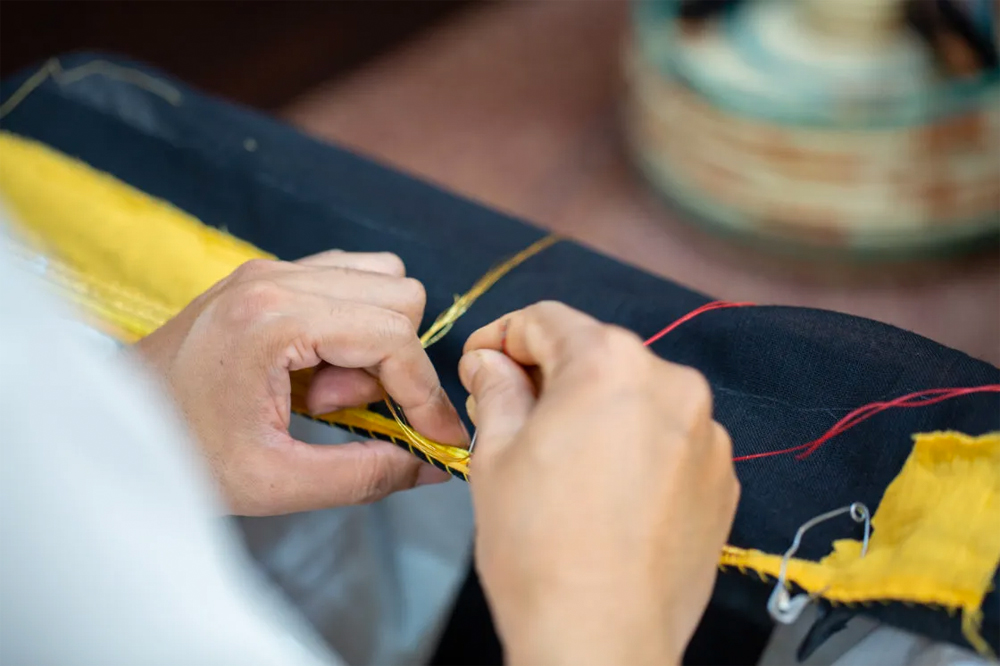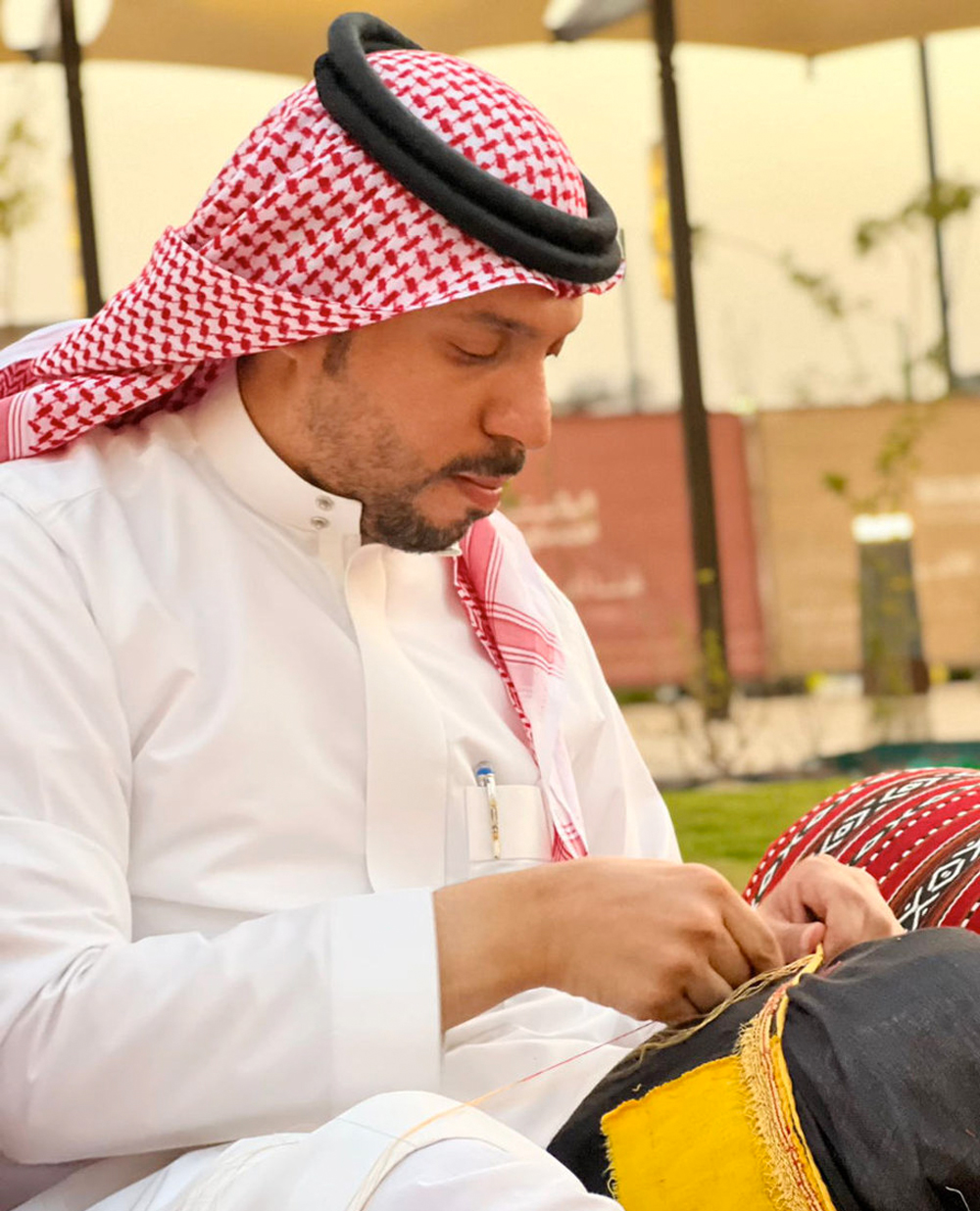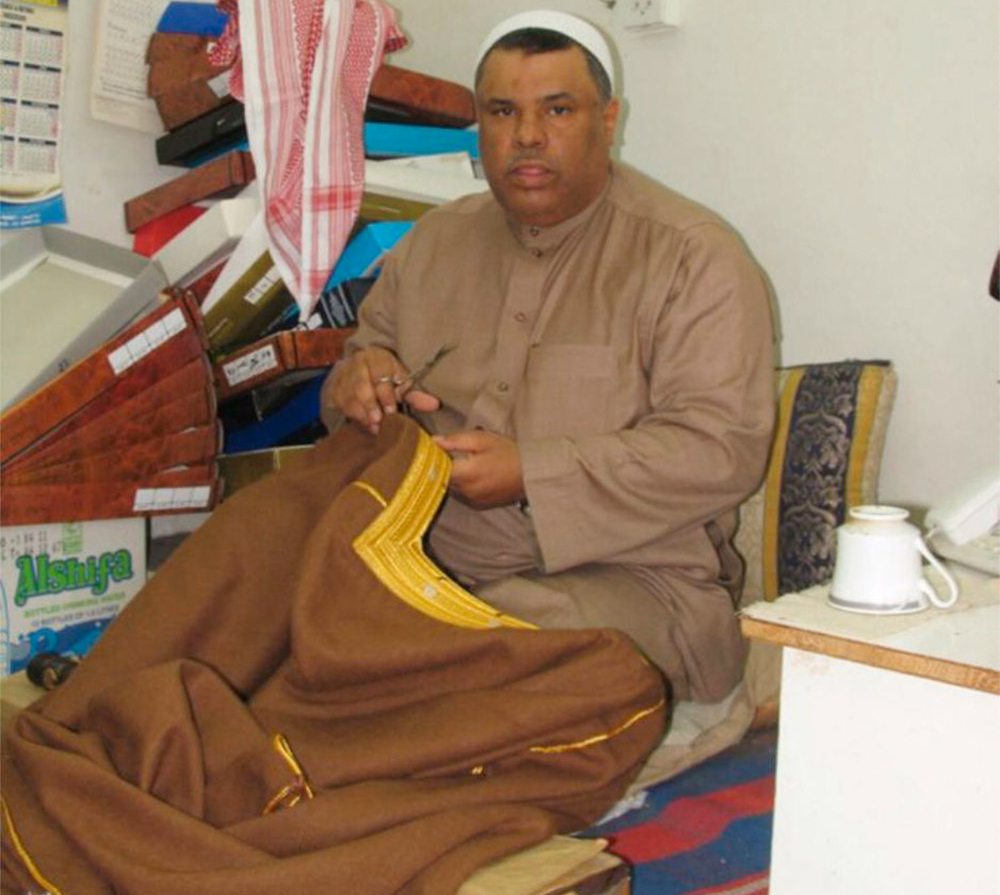
Hosted in the Souq Al-Arbi’a in Al-Ahsa, the Hasawi Bisht festival came to an end on Tuesday 21st June 2022. For those unfamiliar, the bisht is a traditional men’s cloak, most prominently donned in the GCC. Worn over a thobe, it is draped over the shoulders and has no sleeves. The festival spanned over a week and offered up a number of cultural activities as well as an insight into heritage and the significance of hand-knitting in Al-Ahsa, especially when it comes to the creation of bishts.
The festival opened to visitors on Wednesday 15th June 2022, with Eastern Province Gov. Prince Saud bin Naif, who wore a light brown bisht, accompanied by Al-Ahsa Gov. Prince Saud bin Talal bin Badr, and Minister of Municipal and Rural Affairs and Housing Majid Al-Hogail, in attendance. The bisht is a garment often worn on special occasions, and are adorned with traditional hand embroidery with a variety of buttons and threads in yellow, or gold, red, white and silver. The bisht is also worn by grooms on their wedding and in Saudi Arabia, universities encourage their students to wear one for graduation.

Executive member of the national logistics committee at the Federation of Saudi Chambers, Emad Al Gadheer commented, “There is no doubt that Hasawi bisht is a brand with a long history, and it needs to be cared for and properly introduced to ensure its continuity.” He went on to talk about how bisht production should be a point of investment in a bid to preserve such a strong part of the kingdom’s culture.
According to Al Gadheer, the Hasawi bisht is a highly sought after product, and while machine-made bishts are popular and affordable, wealthy and prominent people prefer a handmade bisht. The Hasawi bisht festival also offered visitors an insight into the value of bishts via workshops on the bisht manufacturing industry, traditional handicrafts and bisht knitting. The region of Al Ahsa is well known for the bisht making craft and it is one that has been passed down for generations.

Originally, the bisht industry was helmed by women who would knit them for their sons, to make them seem more distinguished, but as demand increased, men got in on the trade and the industry grew steadily. Bisht have a number of different names based in the way they are decorated and the number of rows, and the width and shape – which can be hexagonal, octagonal, triangular or quadrilateral.
Historically, it has been noted that bisht would only be sold to wealthy merchants, or those with power and wealth, it later developed into a national symbol of Saudi Arabia and its neighboring countries.

















